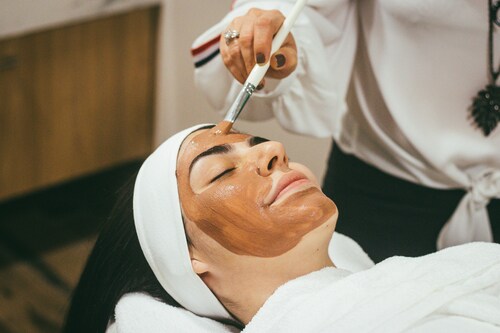In the dynamic world of cosmetic dermatology, exosome therapy has risen as a novel and potent method for enhancing skin health and promoting regeneration. This sophisticated exosomes treatment harnesses the power of exosomes to stimulate the skin’s natural repair mechanisms, offering promising results for individuals seeking rejuvenation and healing. However, the effectiveness of this innovative treatment does not solely rely on the procedure itself but is significantly influenced by the care taken afterwards. Post-treatment care is crucial in ensuring that patients achieve and maintain the optimal outcomes from exosome therapy. This comprehensive guide explores the essential practices and considerations following the therapy that contribute to the success and longevity of the results, emphasizing the pivotal role of aftercare in skin regeneration.
Understanding the Healing Process
This cutting-edge therapeutic approach utilizes extracellular vesicles extracted from stem cells to increase tissue repair and regeneration. It harnesses the power of exosomes to deliver growth factors, proteins, and RNA directly to cells, facilitating improved cellular communication and healing processes in the body. The skin embarks on a complex healing journey following the therapy, necessitating a conducive environment for regeneration. During this critical period, the skin is more vulnerable and requires protection against potential irritants and environmental stressors. The healing process can be enhanced by creating a gentle and supportive skin care environment that allows the exosomes to perform their regenerative functions effectively. Avoiding direct sun exposure, harsh skincare products, and mechanical irritation during this time can prevent complications and ensure that the skin’s recovery is smooth and efficient. Understanding the nuances of this healing journey allows patients to take proactive steps in supporting their skin, making the post-treatment period as impactful as the treatment itself in achieving remarkable results.
Maintaining a Tailored Skincare Routine
The post-treatment phase demands a skincare regimen to nurture and protect the rejuvenating skin. This involves using mild, soothing products that offer hydration without causing unnecessary stress to the skin. Ingredients with calming and reparative properties, such as hyaluronic acid, ceramides, and peptides, are particularly beneficial in supporting the skin’s recovery. Additionally, products containing growth factors can synergize with the exosomes’ actions, further enhancing the regenerative process. It’s imperative to avoid using any products that might introduce harsh chemicals or exfoliating agents into the routine too soon, as these can disrupt the delicate balance of recovering skin. Tailoring skincare to the needs of post-treatment skin ensures that it receives all the necessary support to harness the benefits of the therapy fully.
Hydration and Nutrition
The role of internal wellness in skin health is magnified following the therapy. Adequate hydration is essential, as it aids in maintaining the skin’s elasticity and suppleness, enhancing the overall regenerative effect of the treatment. Focusing on a diet rich in vitamins A, C, E, and other antioxidants can protect skin cells from oxidative stress, supporting their regeneration. Omega-3 fatty acids contribute to the skin’s barrier function and can help reduce inflammation, further aiding the healing process. By prioritizing hydration and nutrition, individuals can provide their skin with the internal resources needed to maximize the regenerative effects of therapy from within, complementing external care strategies.
Avoiding Certain Activities and Exposures
In the weeks following the treatment, patients are advised to carefully manage their exposure to specific activities and environmental factors that could compromise the treatment outcomes. This includes minimizing exposure to direct sunlight, which can exacerbate inflammation and interfere with the skin’s healing process. When sun exposure is unavoidable, using a high-SPF sunscreen and wearing protective clothing can safeguard the treated areas. Additionally, patients should avoid strenuous exercise, high temperatures, and activities that could lead to excessive sweating, as these conditions can irritate the skin and disrupt the delicate healing environment needed for optimal regeneration. By conscientiously avoiding these activities and exposures, patients can protect their skin and enhance the effectiveness of their therapy.
Choosing a Reputable Clinic
Selecting a reputable dermatology aesthetic clinic is a critical decision. A clinic with a record of success in exosome treatments can offer the technical expertise required for effective treatment and the comprehensive post-treatment care necessary for optimal outcomes. Such clinics prioritize patient education, ensuring individuals are fully informed about the best practices for aftercare and are equipped to navigate the healing process confidently. The guidance provided by experienced professionals at a reputable clinic is an invaluable asset in achieving lasting and transformative results from exosome therapy, underscoring the importance of choosing the right provider for both treatment and aftercare.
Conclusion
Exosome therapy represents a significant advancement in dermatological treatments, offering unprecedented potential for skin regeneration and rejuvenation. However, the success of this innovative exosomes treatment extends beyond the procedure itself, relying heavily on comprehensive post-treatment care. Understanding the healing process, maintaining a tailored skincare routine, ensuring proper hydration and nutrition, avoiding detrimental activities and exposures, and selecting a reputable dermatology aesthetic clinic are all critical components contributing to the efficacy and longevity of exosome treatment results. By adhering to these aftercare principles, patients can maximize the transformative potential of exosome therapy, enjoying enhanced skin health and vitality for years to come.



